2015-2016 Men's Mid Season Perspective: There Is More than One Team to Watch
Read Lauren Mandell's Perspective
Nicholas J. Raho
February 10, 2016
Over the last six seasons, every single platform tennis national championship final has included either the name Mark Parsons or Johan du Randt; in over half those years it has included both. This accomplishment had made them household names among most people who play platform tennis competitively. This season there might be reason to believe this streak is in jeopardy. For the first time in their three-year partnership, the powerhouse team of du Randt and Parsons went through the first half of the season without capturing a title. They were shown the exit of two tournaments before the finals, at the hands of two different teams, neither of which was this year's top-ranked team of Drew Broderick and Jared Palmer. This comes in stark contrast to last season.
If you rewind back a year ago, the talk around many a paddle hut water cooler very well may have been, "Is there any team out there that can beat Mark and Johan?" At the time, the pair seemed unbeatable, having won back-to-back National Championships in convincing fashion, barely losing any matches (just one!) since the formation of their partnership. Over the second half of the 2014-2015 season, other teams began to push du Randt and Parsons more and more. One team in particular was doing so while at the same time showing continuous improvement. If you had not guessed yet, it was this season’s undefeated team of Drew Broderick and Jared Palmer. They upset du Randt and Parsons at last year’s Nationals. Their win seemingly showed more teams that the top team could be beat, which makes a much more interesting debate when talking about who is the top team this season.
With the culminating platform tennis event, Nationals, just over a month away there are roughly eight to ten teams out there who could state their case for having a chance at winning this year’s grand prize. But if we look at this year’s results, there are really only three or four that standout. To little surprise those teams are currently the top four ranked teams; (in order) Broderick and Palmer, du Randt and Parsons, Marco Grangeiro and George Wilkinson, and Juan Arraya and Max Le Pivert. With the talent amassed in these teams, it is hard to imagine two others hoisting the trophy at the end of the season. Let’s take a look at the favorites. Later, we will consider some dark horses.
THE FAVORITES
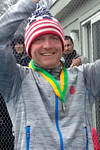 Drew Broderick and Jared Palmer
Drew Broderick and Jared Palmer
Over the last six years, Broderick has made three National finals and captured two. The New Jersey native and former UConn tennis standout has been a fixture on the top of the rankings for the last five seasons. Broderick is known for his signature patience and consistency, often confidently saying during points "all day" to his partner. He also boasts a full repertoire of weapons and a smooth attacking game. Playing the ad-side, unconventional for a lefty in the traditional platform tennis sense, in a way Broderick has broken the mold. With his ability to attack off even the most imprecise shots into the side screen and a dangerous two-handed backhand, there are not many safe places to hit loose balls against him. The left-hander has the ability to be successful with any partner because of his combination of offense and consistency. Last season’s impressive Nationals win with first-year partner, Jared Palmer, says all you need to know about Broderick's ability.
Palmer, while still relatively new to the platform tennis scene as a regular, has taken it by storm. Stories have been written about Palmer's path into platform tennis because he is one of the most decorated tennis players to become a regular on the platform tennis scene in the last 30 years. For the students of the history of the game, he is similar to Clark Graebner and Herb Fitz Gibbon. Graebner and Fitz Gibbon were both world class tennis players who later won platform tennis national championships. Graebner won in 1979; Fitz Gibbon won back-to-back titles in 1977 and 1978.
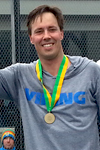 Since starting to play as a regular on the platform tennis tour, Palmer has demonstrated his incredible hands, volleying ability, and big forehand. What arguably is even more impressive is how good he has gotten against other top players, handling balls off screens and addressing the areas of his game that did not come as easily. I remember vividly watching last year’s Nationals, having a sense that you were actually seeing a player get better right in front of your eyes.
Since starting to play as a regular on the platform tennis tour, Palmer has demonstrated his incredible hands, volleying ability, and big forehand. What arguably is even more impressive is how good he has gotten against other top players, handling balls off screens and addressing the areas of his game that did not come as easily. I remember vividly watching last year’s Nationals, having a sense that you were actually seeing a player get better right in front of your eyes.
In the Nationals final, Palmer was able to neutralize Parsons’ deadly rolling overheads from repeatedly catching “the nick” (the back corners of the court where the wires meet) by blocking back lobs before the screen with incredible effectiveness, a strategy that other teams are attempting this season. Palmer, who regularly plays the deuce side with Drew, was tremendous in the final, returning serve and displaying his ability to turn defense to offense. This year’s results have been even more impressive as Broderick and Palmer have picked up right where they left off. They took the title at the Atlantic Classic early in the season and followed that up by winning the Chicago Charities, where they won their semis and finals with identical scores of 6-1, 6-0. Their latest victory at Short Hills came over Arraya and Le Pivert in three sets, after a much-needed reversal of momentum. It is not a stretch to say no team has been as good as them this season.

Mark Parsons and Johan du Randt
At this point, if you think about the most accomplished and dominant platform tennis teams of all-time, du Randt and Parsons must be a part of that group. There are the legends Steve Baird and Rich Maier, who starting in 1979 made thirteen (!) straight National finals, capturing ten in total and four in a row during the span. You have Flip Goodspeed and Scott Mansager, who as a team won eight Men’s National championships between 1996 and 2010, including five in a row, the most consecutive of all-time. Not to be outdone, there is also Dave Ohlmuller and Chris Gambino, who arguably had the greatest year in the history of the sport during the 2002-03 season when they only lost one set during the entire year. Ohlmuller and Gambino made four-out-of-five straight Men’s Nationals finals between 2000-2005 and won two.
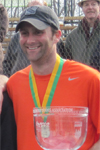 While du Randt and Parsons have only been partners for a relatively short-time, roughly three and half seasons, this duo has had a marked impact on the sport. It is rare that two of the top players in a team sport, who at one point could have been viewed as rivals, decide to team up. But that is exactly what happened in the 2012-2013 season. Opponents in the 2011 National final, I guess the two liked what they saw across the net and decided to give it a shot together. What has transpired has been quite impressive. Similar to the likes of a Brian Uihlein and David Keevins, the pair have been innovators in the game of platform tennis. Parsons credits Baird with teaching him the building blocks of the game, but it is his signature backhand, roller overheads, and the style that he and du Randt have adopted that have changed the way the game is played today. The two have demonstrated a desire to play the game in a more open, untraditional, variable formation, attacking style that has been perfectly suited for du Randt’s devastating offensive game and court coverage. Parsons has been the perfect partner, transitioning from an attacking partner to a steadier one, impressive for someone who already rarely makes any unforced errors. Parsons provides stability and consistency, and creates opportunities for his partner while having firepower to hurt.
While du Randt and Parsons have only been partners for a relatively short-time, roughly three and half seasons, this duo has had a marked impact on the sport. It is rare that two of the top players in a team sport, who at one point could have been viewed as rivals, decide to team up. But that is exactly what happened in the 2012-2013 season. Opponents in the 2011 National final, I guess the two liked what they saw across the net and decided to give it a shot together. What has transpired has been quite impressive. Similar to the likes of a Brian Uihlein and David Keevins, the pair have been innovators in the game of platform tennis. Parsons credits Baird with teaching him the building blocks of the game, but it is his signature backhand, roller overheads, and the style that he and du Randt have adopted that have changed the way the game is played today. The two have demonstrated a desire to play the game in a more open, untraditional, variable formation, attacking style that has been perfectly suited for du Randt’s devastating offensive game and court coverage. Parsons has been the perfect partner, transitioning from an attacking partner to a steadier one, impressive for someone who already rarely makes any unforced errors. Parsons provides stability and consistency, and creates opportunities for his partner while having firepower to hurt.
Back in 2010, still relatively new to the game during his first National finals appearance, du Randt was compared to a 747 because of his wing-span and court coverage. He was also described as a player who can single-handedly take over a match. The same is true today. He is arguably the most dangerous player up at net with his ability to cover the entire width and put opponents under tremendous pressure. Du Randt can punish even the top players with heavy topspin rollers, big cut spinning overheads into the side screen, and finishing spin dropshots the likes of which seem only to be matched in frequency and devastation by Arraya. Du Randt’s only potential weakness has seemed to be the occasional impatience he shows against some of the other top teams. He has a tendency in those moments to sometimes press, leading to more unforced errors.
It is never a good idea to bet against these two; expect them to be right there at the end of the season. But what is different this year is that a few of the other teams seem to have either figured out a strategy to frustrate the duo and/or have elevated their own games. At the Chicago Charities, Grangeiro and Wilkinson were able to take them down, 6-2, 7-5, in the semifinals. This was just the second time du Randt and Parsons had not reached the finals of a tournament they had entered together in their three seasons together. What surprised people even more than that loss was what followed in Long Island. Seeded number one, du Randt and Parsons went to three sets in the quarter-finals against Anthony Cosimano and Nathan LeFevre. In the semi-finals, they were beaten decisively, 6-3, 6-2, by Jeff Morneau and Le Pivert. This loss was even more telling than the first for multiple reasons. Grangeiro and Wilkinson are ranked third in the country and had defeated the team earlier in the season. Le Pivert and Morneau, on the other hand, are not regular partners, and had never won a Grand Prix-type event together. Du Randt and Parsons seemingly struggled against Le Pivert and Morneau more than they have against any other team, excluding Drew and Jared. When du Randt and Parsons captured the Boston Open against a loaded field, they showed that they are focused and ready to take on this second half of the season. However, there are more teams than ever with the confidence to knock them off.
Marco Grangeiro and George Wilkinson
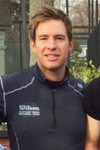
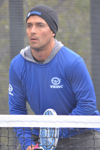 It is probably fair to say that no team, aside from Broderick and Palmer, has been more impressive and consistent this season than Marco Grangeiro and George Wilkinson. Under the tutelage of Gerri Viant, one half of the winningest team ever in the history of women’s platform tennis, this young team is firmly putting themselves in the conversation as a favorite come this March. Grangeiro has seemingly put his serving troubles behind him. He is rock solid at net and strong in the back of the court. Wilkinson, a native Englishman in just his fifth season playing, has put some nagging early-season injuries behind him. With his signature forehand and clutch play, he is starting to make a name for himself.
It is probably fair to say that no team, aside from Broderick and Palmer, has been more impressive and consistent this season than Marco Grangeiro and George Wilkinson. Under the tutelage of Gerri Viant, one half of the winningest team ever in the history of women’s platform tennis, this young team is firmly putting themselves in the conversation as a favorite come this March. Grangeiro has seemingly put his serving troubles behind him. He is rock solid at net and strong in the back of the court. Wilkinson, a native Englishman in just his fifth season playing, has put some nagging early-season injuries behind him. With his signature forehand and clutch play, he is starting to make a name for himself.
Probably most impressive is the team mentality, toughness, and patience these two have shown this season. The results speak for themselves. Their new composure and maturity has led to tournament wins against very tough fields in both the Long Island Invitational and Sound Shore and impressive runner-up finishes at Charities and the Atlantic Classic. Grangeiro and Wilkinson have not seemed to be able to find the recipe yet to beat Broderick and Palmer, but they are the kind of team that can pull out big wins against anyone.
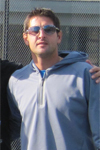 Juan Arraya and Max Le Pivert
Juan Arraya and Max Le Pivert
The one team still trying to figure out their identity seems to be Arraya and Le Pivert. The most obvious reason is that they are still a relatively new team. More complicated is their dynamic. Le Pivert, “the French sensation,” is still relatively new to the game of platform tennis and is evolving as a player and partner. He has great speed and covers the court like a cat. He gains more and more composure and consistency with each match and has smooth ground strokes and volleys. On the other hand, Le Pivert still lacks a bit in his overheads compared to some of his peers, even though he has already been credited with a new variation of overhead, “the Frenchman.” He sometimes seems discouraged when playing with Arraya and does not always show the same confidence and toughness that he demonstrated when playing with Morneau during their run in Long Island. [Note: The two may have recouped their mojo, however, after reaching the finals at Short Hills. Taking the first set in about 15 minutes, they could not hold off the onslaught of Broderick and Palmer.]
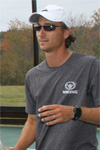 Arraya on the other hand is probably even more complicated. Platform tennis is a team game, but individuals can always be compared and evaluated on their own merits. While it might be controversial, if you had to rattle off a list of the top four individual players in the game at the start of this season (think Alex Bancila’s article “The Four Horsemen”), it may very well look like this (in alphabetic order): Arraya, Broderick, du Randt, Parsons. What is interesting is that while Arraya has had many impressive results, the thing that is missing from his resume is a Nationals final appearance. Why? To throw more wood on the fire, why did Le Pivert have arguably his most impressive result of the season while playing with someone else? Is it because Arraya wears his emotions on his sleeve and his quality of play, while usually high, can vary from incredibly high to something he himself might refer to as “really bad” (it is still good but that is not the point)?
Arraya on the other hand is probably even more complicated. Platform tennis is a team game, but individuals can always be compared and evaluated on their own merits. While it might be controversial, if you had to rattle off a list of the top four individual players in the game at the start of this season (think Alex Bancila’s article “The Four Horsemen”), it may very well look like this (in alphabetic order): Arraya, Broderick, du Randt, Parsons. What is interesting is that while Arraya has had many impressive results, the thing that is missing from his resume is a Nationals final appearance. Why? To throw more wood on the fire, why did Le Pivert have arguably his most impressive result of the season while playing with someone else? Is it because Arraya wears his emotions on his sleeve and his quality of play, while usually high, can vary from incredibly high to something he himself might refer to as “really bad” (it is still good but that is not the point)?
My view is Arraya has established himself as an ambassador of the game and one of its most exciting and talented players to watch. He has an almost unparalleled ability to chop opponents up when on his game. He’s one of the games top ad-side players with his big drives, slices from the back, big serve, and aforementioned heavy spin overheads and nasty backhand cutter.
This team cruised to the finals of the Midwesterns, but then were dispatched quickly in the final at the hands of Drew Broderick and Steve DeRose. They have what it takes to beat any other team, they just have not consistently shown it against the other elite teams. Yet.
DARK HORSES
Steve DeRose and Jon Lubow remain a fixture in the upper echelon of platform tennis. The experienced, cohesive, and skilled team from New Jersey has proven time and time again that they can beat any team when in top form. Do not expect this duo to be overlooked by their competitors.
If a veteran team is going to make a deep run into this year's Nationals and it is not these two, the next most likely could have been Rob Bakker and Flip Goodspeed. But I recently learned that Goodspeed will not be playing in March and Bakker will instead be pairing with Jeff Morneau. There is not much more that needs to be said about Goodspeed that has not already been said. The Hall-of-Fame player can still do it all and make it look easy; he will be sorely missed. Do not underestimate Bakker and Morneau, though. If they can play well together, their savvy styles will prove difficult for any team.
One other veteran team that I believe any spectators in the Fairfield county area in March would be foolish to miss has to be Alex Bancila and Brian Uihlein. “The U” as Uihlein is warmly known to his peers, is a two-time National champion and all-time shot maker and shot inventor. Bancila has an impressive resume as well, highlighted by a Nationals runner-up spot and victories at Sound Shore, Long Island, and Chicago Charities. Bancila has fantastic hands and shot-making ability. This team might not have what it takes to go all the way, but don’t miss them if you have a chance to see them.
Martin Bostrom and Sebastian Bredberg, "The Swedes" are currently ranked 6th nationally and in some ways continue to be a team that just has not broken through yet. They are both young and talented. If they find their rhythm they will be a tough out for anyone, but still do not have enough to be considered favorites.
John Hughes and Marc Powers are another team to watch. They have broken on to the scene this season in a big way. These young and talented newcomers both have strong tennis backgrounds and are figuring out how to compete against the top teams quickly.
Ben McKnight and Pete Rose might not be the flashiest team out there but they are one of the most disciplined. More importantly, they make you beat them. These guys get that paddle is a game where one of the most important things is to not be the point-ender. With Rose’s tennis background and McKnight’s athleticism these guys match-up well against the best.
No matter who wins Nationals this March, I think there is greater parity and depth in the game this season and that is good for the sport. Tune in for this last month of the season, watch the Philly Open on Live Streaming, make plans to go and watch the Nationals in Fairfield County, and most importantly get out there and play and have fun.







